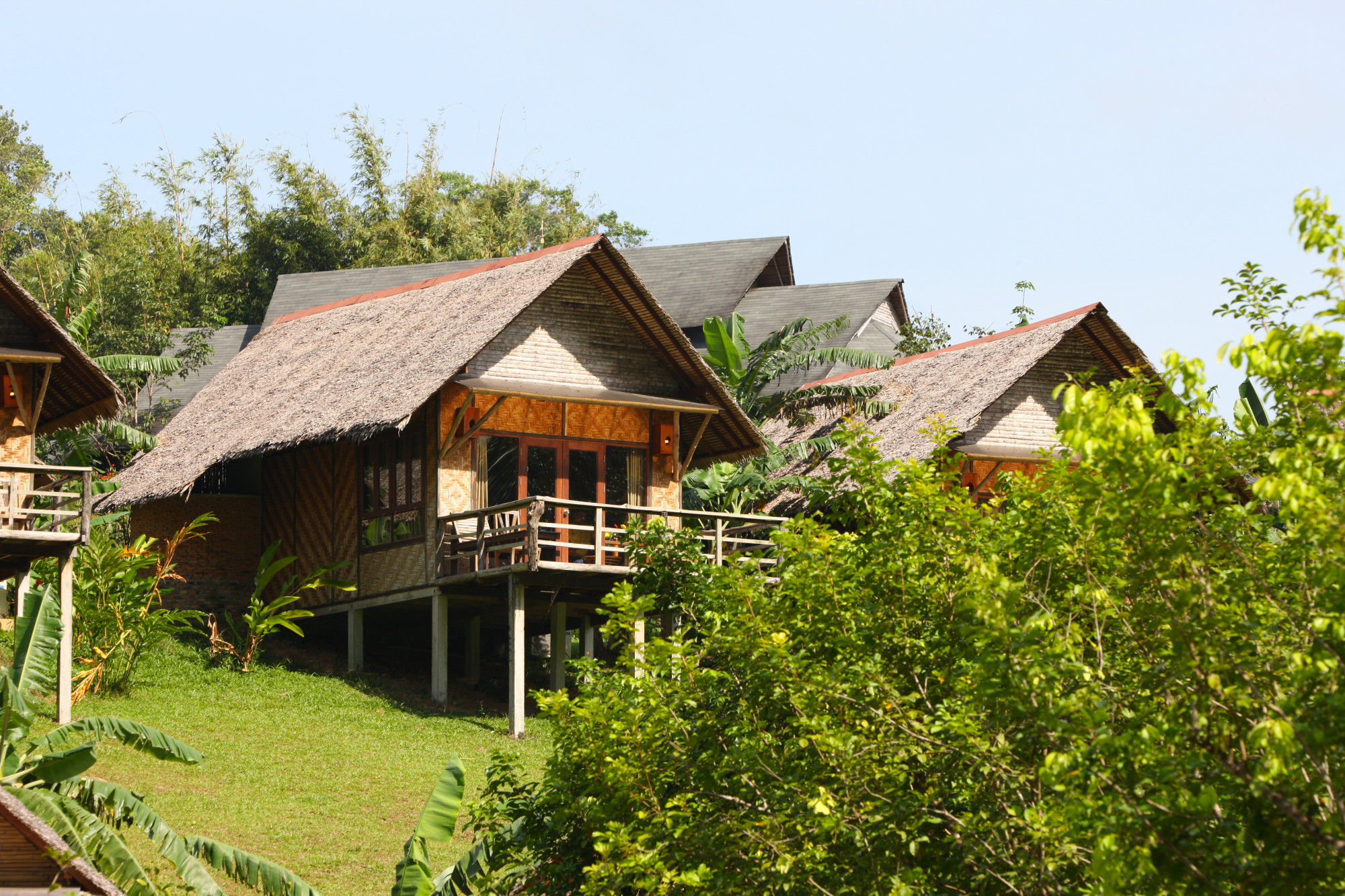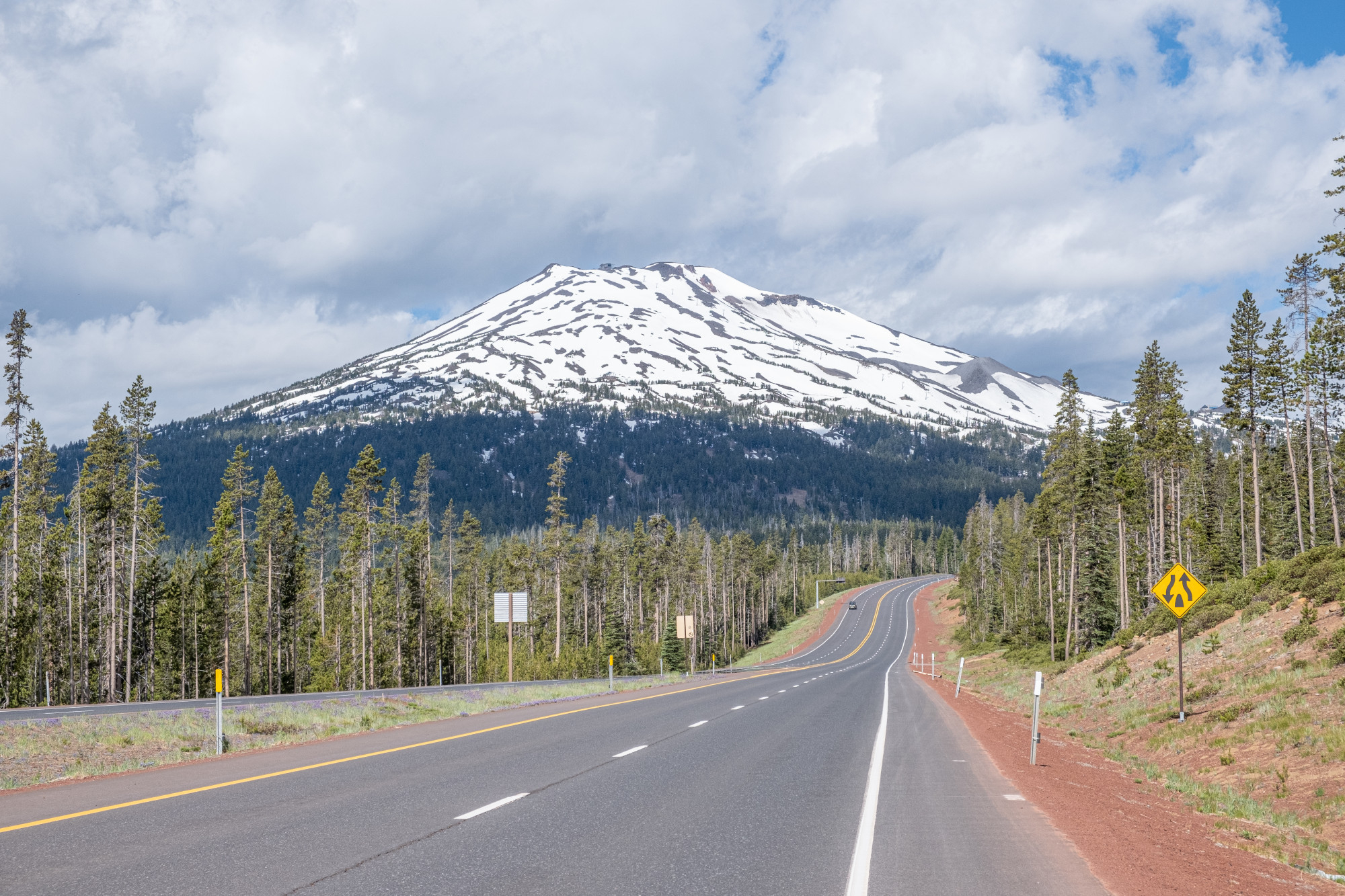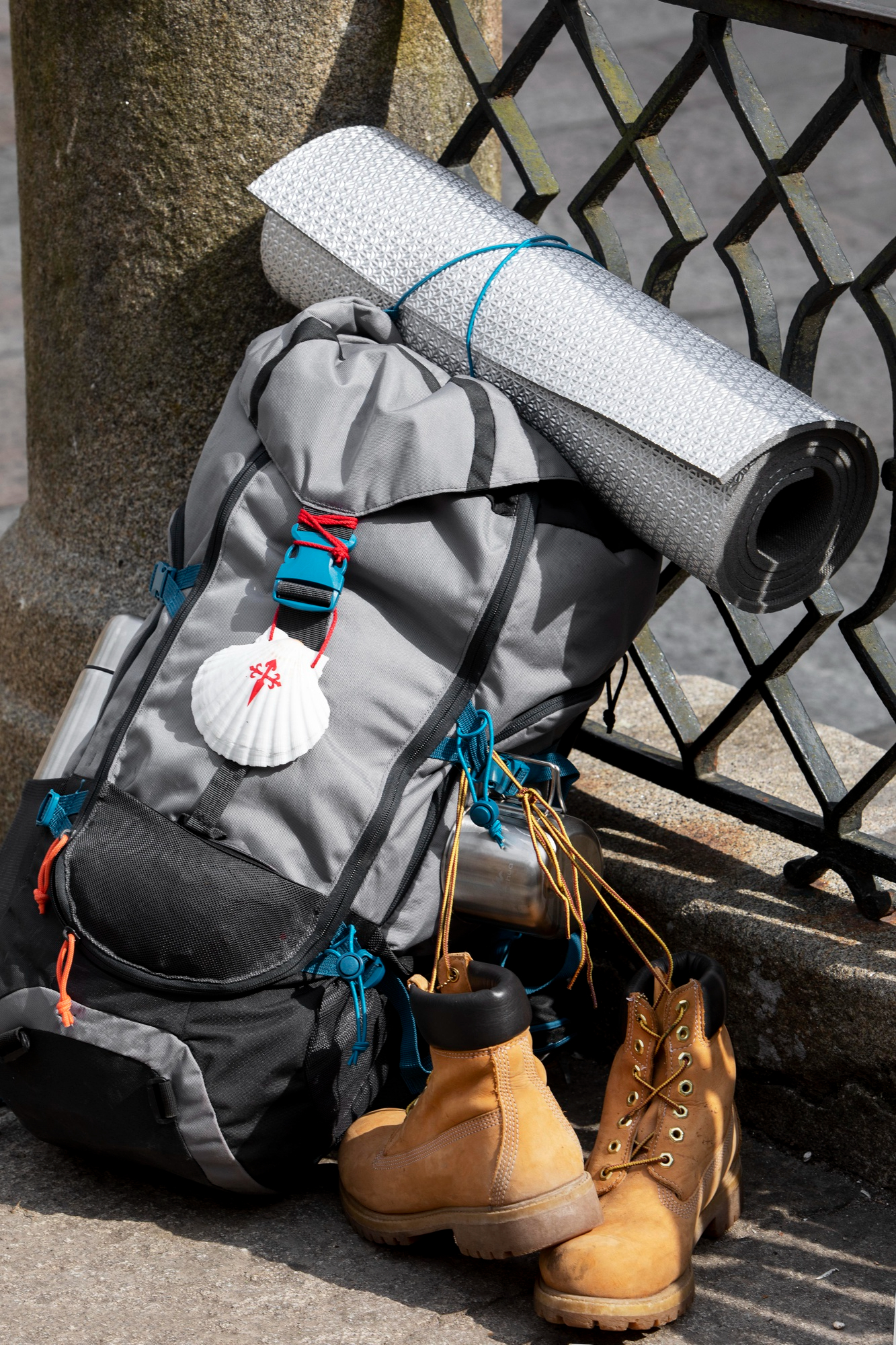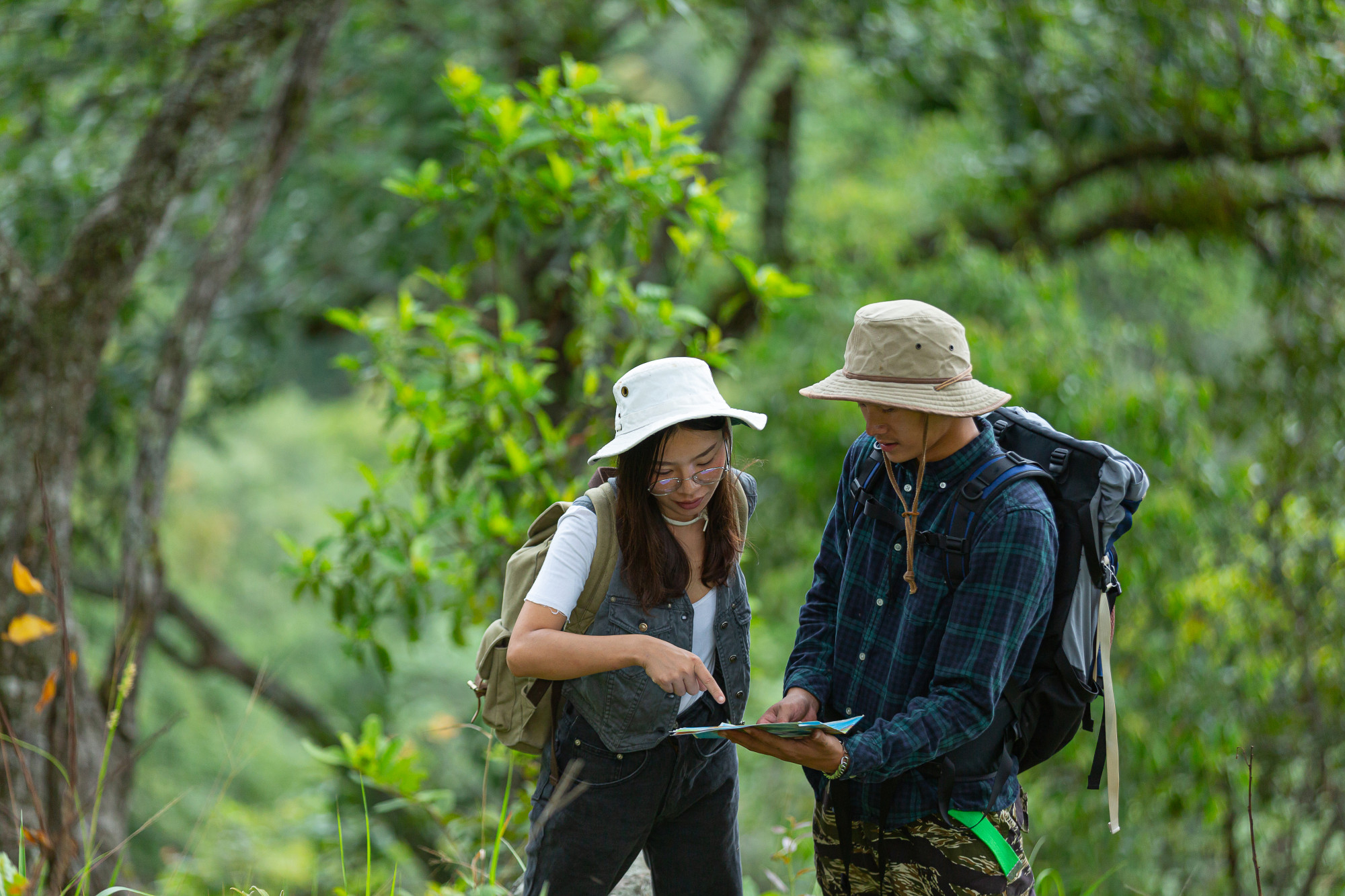Kilimanjaro FAQs

Kilimanjaro Trek:
By far, the best and most convenient way to get to Kilimanjaro is to fly to Kilimanjaro International Airport (JRO), served by airlines such as Kenya Airways, KLM Airlines, Ethiopian Airlines, Turkish Airlines, and Qatar Airlines. From the airport, we will provide a transfer to your hotel (which, as with the transfer back to the airport at the end of your trek, is included in the price of your climb).
Note: You can also fly from there to Nairobi or Dar es Salaam and catch a bus or local flight to Kilimanjaro, Moshi, or Arusha. Though transfers from these airports are not included in our package (only from JRO), we can help you to arrange tickets for these daily shuttle buses (though note that we are not insured for any public bus travel taken by our clients, so any bus journey taken by you is done so entirely at your own risk and we are not responsible for any loss or injury that occurs during the journey).
You will require vaccinations for your trip. All travellers should visit either their personal physician or a travel health clinic about 3 months before departure. Ask your doctor about vaccinations and malaria prophylaxis. The following vaccinations are normally recommended for Tanzania: Yellow Fever, Hepatitis A, Tetanus, Typhoid, Rabies, Polio, Malaria (prophylaxis), and COVID-19.
Please check with the relevant Embassy in your country for up-to-date visa and passport information. Make sure your passport is not going to expire within six months of your trip (i.e., if your trip is in September, make sure your passport is valid until at least March of the following year) and that it has at least 3 clear pages. You can obtain your visa online at https://eservices.immigration.go.tz/visa/ or at the point of entry (airport/border/).
The time taken to clear immigration is roughly the same, regardless of whether you already have your visa. The cost of most tourist visas is U$D 50 per person and U$D 100 for American citizens, to be paid in cash.
No, you don’t need to be an athlete or have experience with technical mountaineering, but you do need to be active, committed to training, and ready for a challenge! The trails can be very steep at points.
Climbing Mount Kilimanjaro necessitates adequate physical preparation. Therefore, it is imperative to undertake a Kilimanjaro training program to ensure that you are well-prepared.
To fully enjoy your hiking and camping experience, it’s important to prioritize physical fitness. Well-conditioned legs can make walking uphill and downhill for extended periods much easier, while a high level of aerobic fitness can help your body function more efficiently with less oxygen. Additionally, a well-toned body is better equipped to handle the stresses of consecutive days of hiking and camping. And don’t forget about the power of positivity – maintaining a positive mental attitude can do wonders for you when you’re faced with fatigue and doubts.
Yes, the main advantages of Climbing Kilimanjaro Solo are that you have total control over your route and walking pace and that there is no risk of having to abort a summit because a fellow hiker succumbs to altitude sickness or wants to turn back. The disadvantages are that the price per person will be relatively high since many of the logistical costs of putting together a Kilimanjaro climb are not significantly dependent on the size of the party. Bearing in mind that many guides and porters speak limited English, it might also be a rather lonely few days.
Going on a solo Kilimanjaro climb is possible, provided you have a guide and a few porters to assist you. However, you cannot climb Mount Kilimanjaro alone without any assistance as it is illegal to go up Mount Kilimanjaro alone.
We recommend arriving at least one day early to give your body time to adjust to any time difference and recuperate from the journey. It also gives you a buffer in case a flight is canceled or delayed or bags are lost or delayed.
This is one of the most general questions we get every day. On average, it takes five to nine days for a person with average fitness to climb Mount Kilimanjaro. At the same time, remember that the more days you spend on Kilimanjaro, the safer and more comfortable your Climbing experiences will be.
Climbing programs of 7/8/9-day duration via Lemosho, Machame, and Rongai routes are the best choice for everyone because of the following reasons:
Longer packages mean more time for your body to get accustomed to the abnormal altitudes of Kilimanjaro. Longer climbing packages feature the right profile for overnight camping – the camps are located at somewhat lower altitudes than your daily Kilimanjaro Climbing Routes. It is especially important for a smooth and successful acclimatization transition.
High, higher, Kilimanjaro height! Mount Kilimanjaro, Tanzania, is the highest mountain in Africa and the tallest free-standing mountain in the world. And while it’s ‘only’ 236th on the list of highest mountains in the world, there’s quite a lot to say when it comes to Mount Kilimanjaro’s height.
The highest mountain in Africa and the tallest free-standing peak in the world, Mount Kilimanjaro soars to 5,895 m / 19,340 feet) above sea level. Towering over the plains, the mountain’s three peaks are covered with a variety of vegetation, from the rainforests of the lower slopes to the alpine vegetation that occurs just below the peaks of the glaciers.
Mt Kilimanjaro has four base camps or high camps
- Kibo Hut/Camp (4,700 meters/15,4196 feet): Kibo base camp is used by hikers on the Marangu and Rongai routes. It follows a slightly steeper and longer path up the slopes of Kibo to the sub-summit, Gilman’s Point (5,685 meters/18,651 feet).
- Barafu Camp (4,670 meters/15,321 feet): Barafu base camp is used by hikers on the Machame, Lemosho, and Umbwe routes. It follows a zigzag route up the slopes of Kibo to the sub-summit, Stella Point (5,739 meters/ 18,829 feet).
- Arrow Glacier Camp (4,903 meters/16,086 feet):hikers use the Arrow base camp on the western breach routes. It follows a rock and steeper and shorter path up the slopes of Kibo’s volcanic crater to the sub-summit, Crater Camp (5,800 meters/19.029 feet).
- Crater camp (5,800 meters/19,029 feet): Crater base camp is the highest camp on Mount Kilimanjaro and is situated in Kibo’s volcanic crater. Due to its altitude, one needs to properly acclimatize before sleeping at crater camp.
The overall Kilimanjaro Routes Success Rate is 70-85%. But this hugely varies depending on the climbing route. Kilimanjaro Success Ratings – Mount Kilimanjaro Climbing offers a true Adventure Experience during Your Tanzania Tours. Around 30,000 – 40,000 Travelers Climb to the Summit Every Year, but it is not an easy task.
It makes sense to plan your climbing adventure with summit success rates in mind, but it is also important to understand what “Kilimanjaro Success Rate” means in the context of a mountain, especially Kilimanjaro.
The success rate is not the only factor to consider when choosing a route on Kilimanjaro, but it is a very important one! However, a success rate on a route should be considered alongside climbing experience, previous acclimatization, and fitness level of climbers, all of which Kilele climb discusses in this article.
You can rest assured that with all of our treks, the aim is to maximize your chances of making it to the top with great care. We will carefully monitor your hiking speed, provide sufficient food and rest, and keep a close eye on your physical health to increase your chances of success. In addition, we offer several different routes to maximize your chances of reaching the Roof of Africa.
That said, the ambition for all treks is to make sure that all trekkers fulfill their potential – which does not necessarily mean reaching the summit. We will not jeopardize the health of anybody just so that we can say that all trekkers who booked through us have reached the top. We want you to enjoy your trek, to have a fantastic experience, and to love the mountain almost as much as we do. And we want you to feel that you have done the best you can. But above all else, we want you to be safe. Everything else is of secondary importance. So, if it is felt that you are not fit or well enough to reach the summit, you will not be allowed to try.
So, you’ve decided to take on the challenge of tackling Africa’s highest peak? Next, you need to think about the best time to climb Kilimanjaro in terms of weather, trekking conditions, and popularity.
Kilele Climb suggests climbing Kilimanjaro in January-February or August-September when warmer temperatures and clear skies are most likely. But these are also the most crowded months. Climbing in March or October, just before each of the two rainy seasons, is the best hedge to avoid both crowds and foul weather.
On the first day of your climb, you are likely to lose signal before reaching the gate and will not regain it until day two. At the foot of every itinerary, you’ll find details of where we’ve been able to get reception on Kilimanjaro. Your crew will also know where they can get a signal, and you’ll often see porters drifting off from the campsite together to walk to a spot where they’ve got reception before.
Of course, nowadays a phone is more than just something to speak into, and you’ll also find your phone useful for taking photos, recording sound, using it as a torch, playing games at the campsite, tracking your exact location, etc. So do remember to bring a battery pack/power pack or two to make sure you can keep it charged during the climb.
Accommodation:
Accommodation in Kilimanjaro
Accommodation in Kilimanjaro National Park ranges from beautiful and extravagant wild cabins to comfortable tented camps. There are enough options to suit all types of preferences, spending plans, and trip types that visitors have. Kilimanjaro has only a few accommodations located in distinct areas of the park.
Accommodation Before & After Your Kilimanjaro Climb.
We offer a wide range of accommodation options, which you can find out about on our Accommodation page. Note that some of these will require the payment of an ‘upgrade fee’ as they are of a superior standard to the hotels that are included in your climbing package.
Kilimanjaro Accommodation ranges from luxury wilderness lodges to comfortable tented camps – enough to suit all tastes, budgets, and trip types. Whether you’re looking for a stopover before you Climbing Mount Kilimanjaro or a relaxing safari lodge from which to explore the area, our selection of Mount Kilimanjaro accommodations is sure to inspire you and will make planning your Tanzania safari so much simpler.

Weather:
The weather varies greatly, depending on where you are. Whatever time of year you come, please bring some warm clothes! It gets really cold in some places because of the high altitude, especially in June, July, and August. It can also get very hot. We advise dressing in layers. Typically, the long rains are in March, April and May. The short rains are in November / early December.
The Best Time of the Year to Climb Kilimanjaro are the months of January through early March and June through October. You can climb Kilimanjaro at any time of the year, but certain months are better than others.
Kilele Climb generally advises that the best time to climb Kilimanjaro is during the warmest and driest times of the year, from December to mid-March and mid-June to the end of October. However, although these are considered to be the best times to climb the mountain in terms of weather, they are also the busiest months.
The best Seasons to Climb Mount Kilimanjaro are traditionally December through to March and June through to October. At this time, temperatures in Moshi, at the base of the mountain, are typically around 22 degrees C, and summit temperatures around – 7 degrees C.
It is generally advised to try and avoid November and April / May, which are when the short and long rains come. However, there is a caveat as the seasons are shifting, and the timing of the rains is definitely less predictable when compared to the past and, of course, you must be prepared (as per any mountain) for rain (and higher-up snow) at all times of the year.
If you were to climb in a period when the weather would traditionally be wetter, then the northern slopes are not only less traveled, but they’re also less affected by the rains. Therefore, if you’d like to go at a quieter time, then November and April / May deliver fewer people, and if you use the Rongai Route, which starts on the northern slopes, it’ll be drier than the Machame Route or Lemosho Route that cross the southern flanks during the traditional rains.
At Uhuru Point, the temperature range can be highly variable, spanning from 20 to -20 degrees Fahrenheit (-7 to -29 degrees Celsius). Mount Kilimanjaro’s weather is characterized by extreme and unpredictable conditions, rendering it difficult to accurately forecast. As a result, it is prudent to equip oneself with multiple layers of clothing for the trek, as this approach helps to maintain the body’s warmth during cold weather conditions at the summit. To this end, Kilele Climb offers rental options for such essential gear.
Safety:
Yes, definitely. It is imperative you take out appropriate insurance for your trek. If you are up for hiking the highest free-standing mountain in the world, you may also be aware of the risks involved.
We advise guests to take out insurance cover, which includes ‘cancellation for any reason. As a minimum, your insurance should also cover you for personal baggage, medical repatriation, and trip interruption, regardless of any official COVID-19 travel advisory.
Yes. We recommend bringing a basic First Aid Kit. This is a suggested list of supplies: Sun Screen, Antihistamine cream & tablets, Nurofen or equivalent painkiller, Eye-drops, Anti-diarrhea treatment, A couple of bandages, Medication for personal allergies/asthma, etc., Insect repellent containing Deet, Rehydration sachets/vitamin tablets, Assorted plasters.
The guides have been trained in high-altitude medical care. Each trek will also be equipped with a comprehensive first-aid medical kit. The guides also carry oxygen for those people who are suffering from altitude sickness – though this is very much a last resort, and the guides are trained to spot altitude sickness before it becomes necessary to use oxygen.
Route Choice:
Which Kilimanjaro route has the highest success rate?
The Lemosho Route Success Rate is around 95% on the 8-day itinerary that we provide, and on the 7-day package, it is around 90%. The Kilimanjaro Routes Success Rates are highest on the northern circuit route. This is the newest and the longest route, taking 9 days to summit Kilimanjaro.
Picking the right Route on Kilimanjaro is one of the most important things for your climb. The route you pick is going to determine whether you will reach the summit successfully. And it will also affect how much you will enjoy the entire journey.

Equipment:
Can I rent equipment from you?
Yes, you can hire top-quality equipment for no more than a few dollars per item per trip – though do make sure you contact us early with your requirements (including, where necessary, the required sizes) to ensure that we can reserve this for you.
The kit we can rent out and the cost of renting these items are as follows:
- Sleeping bags US$35 per trip
- Large duffel bag US$25 per trip
- Down/summit jackets US$25 per trip
- Daypack US$25 per trip
- Waterproof trousers US$12 per trip
- Walking poles US$12 per trip
- Trekking boots US$25
- Gloves: US$12 per trip
- Waterproof jacket US$15 per trip
- Head torch US$10 per trip
- Balaclava / Buff US$7 per trip
- Sunglasses US$10 per trip
Just let us know if there are any items you require and, where necessary, your size (S, M, L, XL, XXL), and I’ll make sure we reserve these items for you.

Food & Water:
What type of food?
Kilimanjaro Food is considered to confirm your food intake matches your level of exertion. It will provide you with a good balance of protein, carbohydrates, fruit, and vegetables. Apart from Training for Kilimanjaro, your diet on the summit and during the trek is very important. Your Kilimanjaro Meals will be prepared by your cooks on Kilimanjaro, and the food will be carried by your Kilimanjaro Porters.
You will be surprised at the variety, quantity & quality of the food we serve to you whilst you are on Kilimanjaro Routes. As you are trekking for between 4-8 hours a day (before summit night), you’ll be burning a lot of calories – and as you are at altitude – even more than you would at sea level.

Tipping:
How Much Should I Tip Porters on Kilimanjaro?
It is recommended that during your trip, you ascertain the customary method of tipping for porters and guides. Although we do not provide a specific amount, we have compiled a Kilimanjaro Tipping Guide, which offers some approximations to aid you when visiting Tanzania.
- Lead guide - $20 a day
- Assistant guide and cook - min- $10- $15 a day
- Porter - $7-$10 a day
These amounts are per group of climbers NOT per climber. You will be advised of the total size of your crew in your final briefing pack.

Book your trip:
Our prices can be found by following this link to the Kilimanjaro pricing table on the Kilimanjaro guide page.
Again, you can find out what exactly is included in the price of your climb – and what is exclusive! – by visiting the What’s Inclusive in your trekking section of the climbing Kilimanjaro page.
Our objective is to provide our customers with the best value possible rather than the most inexpensive hikes on the mountain. While it is true that our Kilimanjaro treks may not be the most affordable, our ethical policies ensure that our mountain crew members receive fair wages. Consequently, our treks may be somewhat more expensive than the very cheapest ones. We recommend that you inquire about the wages of other companies that offer cheaper treks and compare our prices to those of other trekking agencies that provide comparable services and fair salaries to their mountain crews. This will assist you in comprehending why we are convinced that we offer the best value treks on the mountain. Instead of questioning why our treks are affordable, it is advisable to question the reason why other companies are so costly!
Only once every aspect of your trip is sorted out and booked. We ask for a 20% deposit in order to secure the booking.
As we are charged in US dollars, all our prices are quoted in US dollars, too. However, we are able to accept a wide range of other currencies, too, including sterling, euros, Tanzania shillings, and many more. Just ask us, and we’ll do our best to oblige. Nor do we use ridiculous exchange rates. Instead, we use the rates set by TransferWise, which are widely regarded as the fairest market exchange rates in common use.
International transfers are accepted and are the easiest way to pay. Bank Transfer (most banks charge for this service) Master/Visa card (this incurs an additional 3% bank surcharge).
When it comes to paying the final balance, we recommend you pay by international transfer. There will be no extra charge from us for receiving these transfers, though you may want to speak with your bank first as, again, they will usually charge a fee to carry out the transfer.
We do also accept cash on arrival, providing that you have already paid a deposit and arranged with us beforehand that you want to pay the balance when you arrive in Tanzania.
We like to have everything sorted out 30 days before you are due to begin your climb/Wildlife Safari. The exact date will be given on your invoice. Sending us the money this far in advance gives us time to pay for the hotels and to pay for other services that need to be paid for beforehand. Obviously, if you are booking a trek at the last minute, then we will be flexible on this deadline and will find a way to work around it. Similarly, if you contact us in advance because you are having trouble meeting the deadline, then we may able to arrange a later deadline.
We try to be as fair as possible when it comes to people canceling their trips. Basically, if you need to cancel your trek for whatever reason, providing you do so at least one month prior to departure, you will receive a refund for the full amount paid, less US$200 per person (i.e., the amount equivalent to the deposit we charge to reserve your trek) and any safari deposit you have paid. We need to charge this fee to cover our costs.
However, if, instead of canceling your trek, you merely wish to postpone it and climb on a later date, then any payments you have made (whether you have merely made a deposit payment or have already paid the full balance) will be passed on to this new trek – so you lose nothing.
Tanzania Wildlife Safari:
Officially, you can bring children of any age on safari. That said, we would not normally recommend safaris for children under the age of 5. There will be some long hours in the vehicle, and constant animal sightings are not guaranteed. It can be hot and dusty, and the roads may be bumpy, which is tiring even for adults. Sometimes, the best idea is to remain in one and the same spot for an hour or more, waiting quietly in the car until the cheetah goes hunting or until the wildebeest crosses the river.
At the camps and tented lodges, chefs prepare fresh soups, bread, entrees, and desserts daily; in most lodges, meals are served buffet-style. The food is often prepared with Western palates in mind (some local dishes are included). On a camping safari, you will have your own private Chef who will prepare all your meals. Your Chef will be able to cater to different tastes, e.g., Western, Local, or a mixture.
Our Safari vehicles are Toyota Landcruiser 4x4s (with pop-up roofs). The vehicles are serviced and maintained to a very high standard before, during, and after every safari. The age of the vehicles in our fleet varies, but most were built between 2007 and 2014.
If your vehicle does break down and it cannot be fixed on the road, we will request a rescue jeep, which will come for you so that you can continue your safari with minimum impact. Whilst every effort is made to prevent this from happening, the driving is rough, and the vehicles do take quite a pounding!